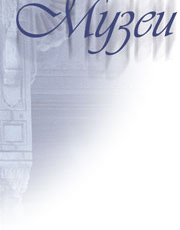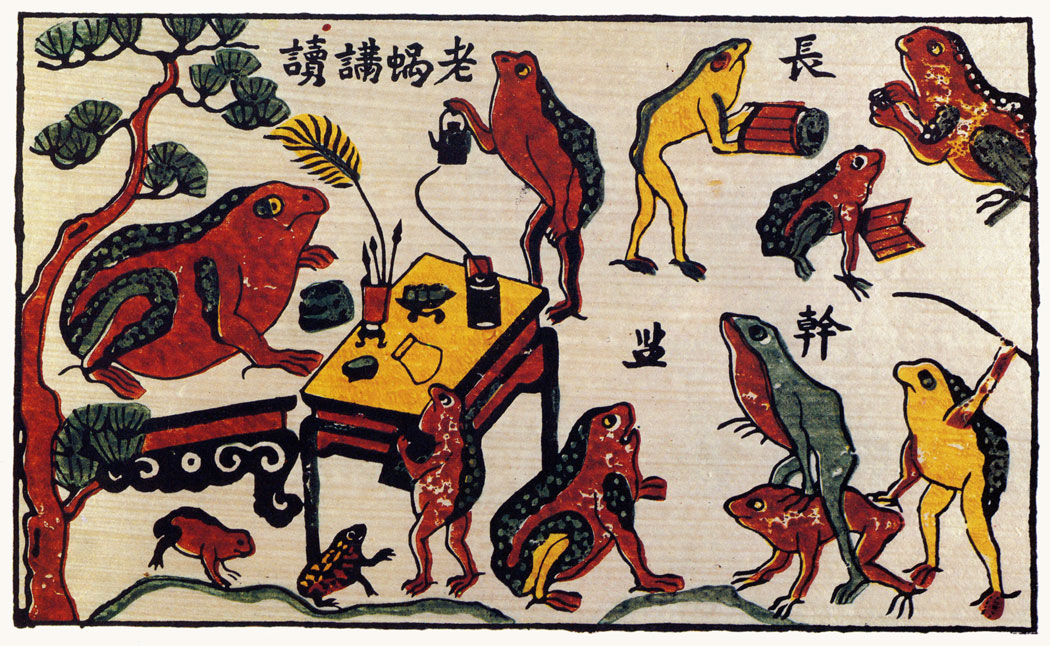
Vietnam

Popular print
Vietnam. 1961
Hand-coloured woodblock print.
25 × 35 cm. lnv. No.14664 I
Acquired in 1963. First publication.
Popular printing is a very old and wide-spread artistic activity in Vietnam. Such prints were usually connected with various traditional holidays, particularly the New Year celebration. The repertory of subjects was fairly large, but the central theme of every print was always a message of goodwill conveyed through symbols and allegories. Thus, a dragon symbolized perfection, a turtle and a plum-tree meant longevity, a fish and a pig were signs of abundance and wealth, a bat of happiness, a pomegranate stood for fertility, a pear for friendship, etc.
Market Day in a Mountain Village
By Nguyen Chong Niet. Vietnam. 1960s
Wood, lacquered, with leaf gold and inlays of egg-shell.
80 × 110 cm. Inv. No. 14251 I
Received in 1962 from the Board of Art Exhibitions and Panoramas attached to the USSR Ministry of Culture, Moscow.
The picture shows a street in a small mountainous village crowded with people hurrying to the market or returning home with purchases. It vividly depicts characteristic ethnic types of the region, their distinctive national costumes, various domestic objects and the architecture peculiar to a village in this part of the country. The skyline is formed by a chain of not very high but formidable-looking mountains which stand out boldly against the crimson sky and golden clouds. The setting sun seems to inflame all the colours-the red of the tiled roofs, the golden-reddish of the road and even the white of the walls of the houses. The colouring of the picture, warm, brilliant and saturated, serves here as a perfect medium for the atmosphere of a late afternoon when the colours of a landscape become more intense and concentrated.
Like many other lacquer pictures by contemporary Vietnamese artists, this composition is characterized by a variety and complexity of techniques. For example, the golden light of the sunset is achieved by means of leaf gold underneath coats of lacquer colours, while the white colour is the result of inlays of egg-shell. These varied and ingenious methods account for the rich and picturesque palette of the picture and for joyful decorativeness.
Rice Planting
By Hoang Tick Chu. Vietnam. 1961
Wood, lacquered, with leaf gold and silver and inlays of egg-shell.
91 × 122 cm. Inv. No. 14255 I
Received in 1962 from the Board of Art Exhibitions and Panoramas attached to the USSR Ministry of Culture, Moscow.
The picture is executed on a laurel-wood panel by a complicated method of lacquer painting. It is a time-consuming process which requires considerable professional skill and some special knowledge on the part of the artist. As this technique practically excludes the possibility of making any corrections or alterations, every detail of the future picture must be conceived and thoroughly thought out beforehand. Polishing is the final stage and its importance for the picture is almost crucial. By means of polishing the artist can make the contours of object clear or blurred, he can bring out the major elements of the composition and make secondary details less conspicuous, he can unite or disconnect different planes of the picture, etc.
For this colourful and highly picturesque composition the artist used leaf gold whose sparkling from under coats of lacquer colours gives them a shimmering golden tinge. Leaf silver, in its turn, underlying the layers of blue-greyish transparent colours endows them with a cool pearl-like lustre. The romantic landscape, with its emotional touch and exceptionally beautiful colouring, imparts a festive atmosphere to a simple genre scene represented in the picture.
Youth
By Tchan Dong Lyong (born 1925). Vietnam. 1958
Indian ink and watercolours on silk.
57.5 × 46 cm. Inv. No. 13358 I
Received in 1960 from the Board of Art Exhibitions and Panoramas attached to the USSR Ministry of Culture, Moscow.
The portrait is executed in the traditional technique of Indian-ink-and-watercolour painting on silk. The noble palette, the refinement of lines and forms, the delicate washes of Indian ink which blur the contours and contribute to a soft modelling of the face, stress the fragile beauty of the young girl.
Portrait of a Tai Girl
By Tchan Van Kan. Vietnam. 1961
Oil on canvas.
55.5 × 45.5 cm. Inv. No. 14004 I
Received in 1961 from the Board of Art Exhibitions and Panoramas attached to the USSR Ministry of Culture, Moscow.
Tchan Van Kan is one of the leading contemporary Vietnamese artists specializing in oil painting. Oil painting appeared in Vietnam in the late 19th century and has become very popular in recent years. It exerted a strong influence both on lacquer painting and the traditional Indian-ink-and-watercolour painting on silk.
The artist succeeded in capturing the lively, energetic and impetuous nature of his model and the distinct traits of her appearance. Both the composition of the canvas and the artist's pictorial manner are free, elegant and unrestrained.
Bridge
By Tchan Din Tkho. Vietnam. 1961
Wood, lacquered, with leaf gold.
60 × 75.5 cm. Inv. No. 14251 I
Received in 1962 from the Board of Art Exhibitions and Panoramas attached to the USSR Ministry of Culture, Moscow.
The painting is executed on a red background whose warm colour makes one feel the heat of the tropical summer.
The landscape is of a predominantly decorative nature and is evocative of lacquer objects d'art, which have long been a speciality of Vietnamese craftsmen. Lacquer paintings of this kind, with flaming colouring, are related to Vietnamese popular prints in which red was traditionally used as a background for the pictures.
A Team of State Purveyors at Work
By Nguyen Nhi Huang. Vietnam. 1962
Wood, incised, painted and lacquered.
110 × 80 cm. lnv.No.14805 I
Received in 1964 from the Board of Art Exhibitions and Panoramas attached to the USSR Ministry of Culture, Moscow.
The composition is performed by means of incising the pattern on a smooth, black surface and subsequent colouring of the incised contours. The picture deals with a subject whose current urgency was realized by all the Vietnamese. The technique, on the other hand, is quite old and goes back to the ancient traditions of national art.
|
ПОИСК:
|
© MUSEUMS.ARTYX.RU, 2001-2021
При использовании материалов сайта активная ссылка обязательна:
http://museums.artyx.ru/ 'Музеи мира'
При использовании материалов сайта активная ссылка обязательна:
http://museums.artyx.ru/ 'Музеи мира'